The Generation Gap: How Customer Service Needs Vary by Age

Last Updated: August 16, 2023
What do Boomers value? How did we forget about Gen X? And how can we be ‘social’ enough for Millennials or convenient enough for Gen Z? Each generation has its own customer service needs and challenges. Depending on when you were born, and what tech was in use, you may consume media differently, shop differently, think differently, and you will likely seek out customer service in diverse ways. So, what does each generation want? We explore Boomers to Gen Z and a few things we all share.
Baby Boomers – The “Selectives”
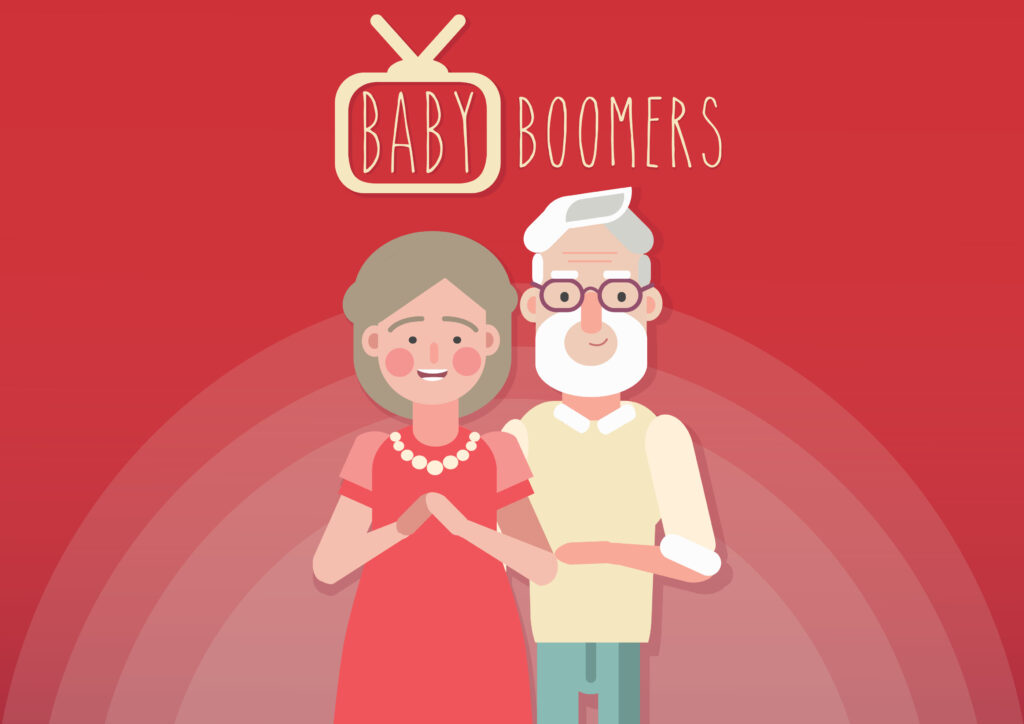
The generation born between 1946 and 1964 may be more pragmatic about their buying decisions, but their expectations of customer service are high.
Often retired or ready to retire, Boomers are the most sensitive to price when making a purchase. However, they also know the value of good customer service, and with more savings and disposable income than most, they might not blink at the price if the experience is excellent.
This generation still values the traditional buying criteria of quality (94%), performance (93%) and price (92%). They aren’t likely to be swayed by flashy celebrity endorsements, social media, or even social causes as much as younger generations, though they expect ethical leadership from their favorite brands.
Since Boomers grew up in a world without the internet, they still prefer the personal interaction of in-store shopping. However, don’t make the mistake of thinking Boomers aren’t digitally savvy. They often research brands online (85%) and make online purchases; 54% of Boomers have made a purchase on Amazon in the last 30 days. They also use email and often reach out to brands through email support (30%), but still prefer the phone for most customer service issues (55%).
What they care about: Price, customer service, responsible leadership
Preferred Customer Service Channels: Voice, email
Gen X – The Skeptics
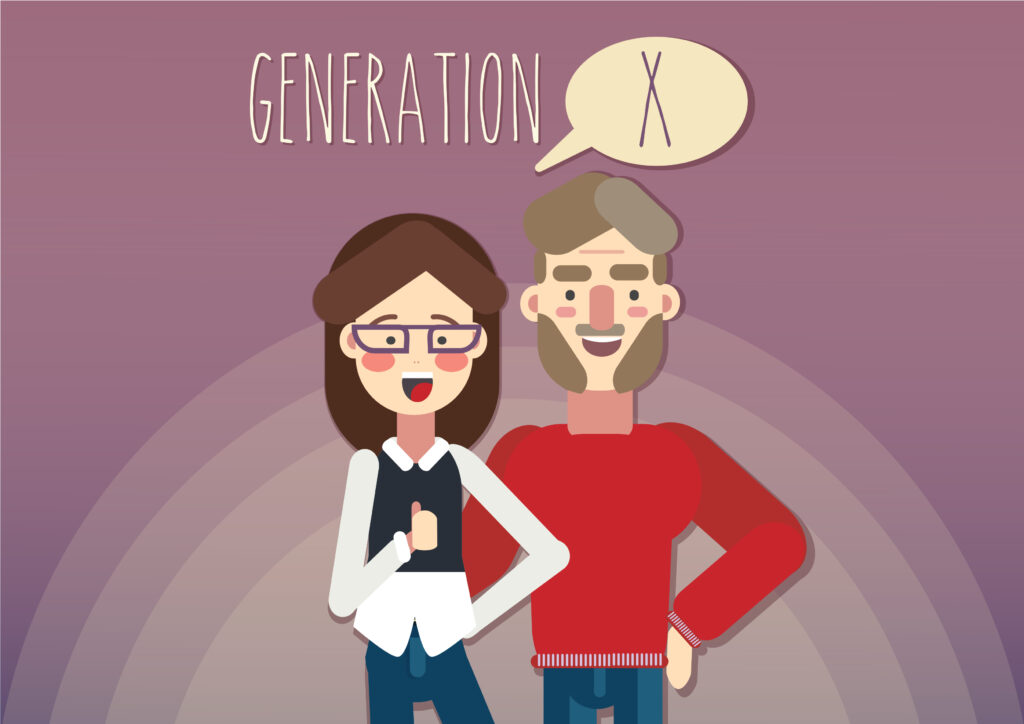
Gen X is often dubbed “The Neglected Generation” because brands often forget about this small but influential demographic that values authenticity and despises “fake” marketing messages.
Born between 1965 and 1980, this generation is often neglected by marketers. Although Gen Xer’s represent a mere 25% of the U.S. population, they produce 31% of total U.S. income, and are often at the peak of their professional careers, which means they have tremendous purchasing power and influence.
Independent, family-oriented, and heavily into social causes, Gen Xer’s grew up straddling the pre- and post-internet world. They have a certain nostalgia for the days before smartphones and tablets and are natural skeptics when it comes to marketing messages. Instead, they turn to online reviews, search engines or social media to inform purchasing decisions, and they will be on the lookout for brands that show authenticity, transparency, and consistency across all digital platforms.
They like emails, if they’re personalized. They may want to connect occasionally via social media, mainly Facebook (95%), and are more likely to reach out through digital support channels, as they are one of the heaviest smartphone users (3 hours a day). However, 46% still prefer the phone for customer service, followed by email (40%) and a third don’t mind chatbots or live chat.
What they care about: Authenticity, family, social causes, personalized experiences
Preferred Customer Service Channels: Voice, email, and live chat
Millennials – The Social Butterflies
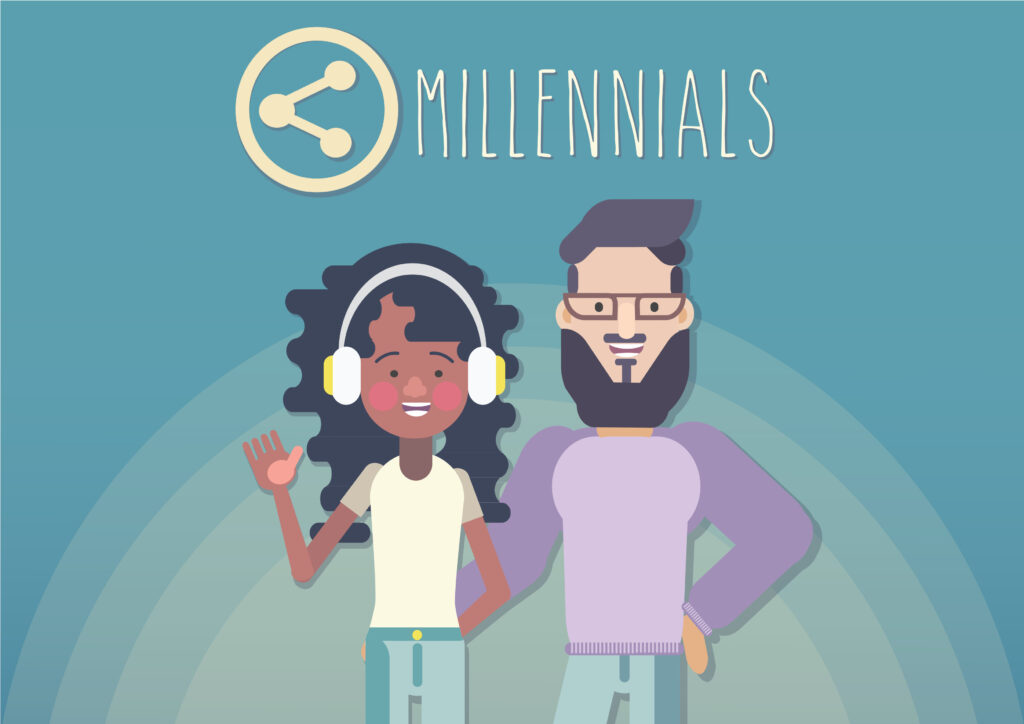
Millennials, or Gen Y, have now overtaken Boomers as the largest demographic in the U.S. They are the first generation to allow technology, and devices, to permeate every aspect of their lives, from how they socialize to how they shop.
Having grown up at the height of the dot.com boom, Millennials, born 1981 to 1997, favor convenience and instant gratification. That’s why they like browsing online. But oddly enough, 48% prefer to order online but pick up in-store, to avoid the wait. When they need to contact a brand for support, they will make use of every available channel. In fact, 68% want omnichannel options (email, live chat, text) and may use more than one device during their buyer’s journey. They also expect their customer data to slide easily from channel to channel.
Price isn’t an issue if they want something badly enough, though social connections play a considerable influence on buying decisions. Word of mouth is especially important to Millennials (82%). Social media also plays a significant role in their decision-making; 68% admit to being strongly influenced by social media and user-generated content (84%). But beware, Millennials are just as sensitive to obvious marketing tactics as Gen X. Instead, they prefer interacting with other consumers of a retailer’s products, or directly with brands on social media (47%).
They prefer solving problems on their own (62%), or with limited company guidance, which makes email a preferred channel, along with other options that allow them to resolve their issue quickly and conveniently, such as text messages, online forms, and live chat. If they do reach out to a live agent, they expect to have an enjoyable experience. If not, they are quick to quit a brand (52%), but if they have a good experience, a whopping 80% will remain loyal.
What they care about: Social connections, convenience, authenticity, omnichannel service
Preferred Customer Service Channels: In person, email, text, live chat
Gen Z- The DIYers
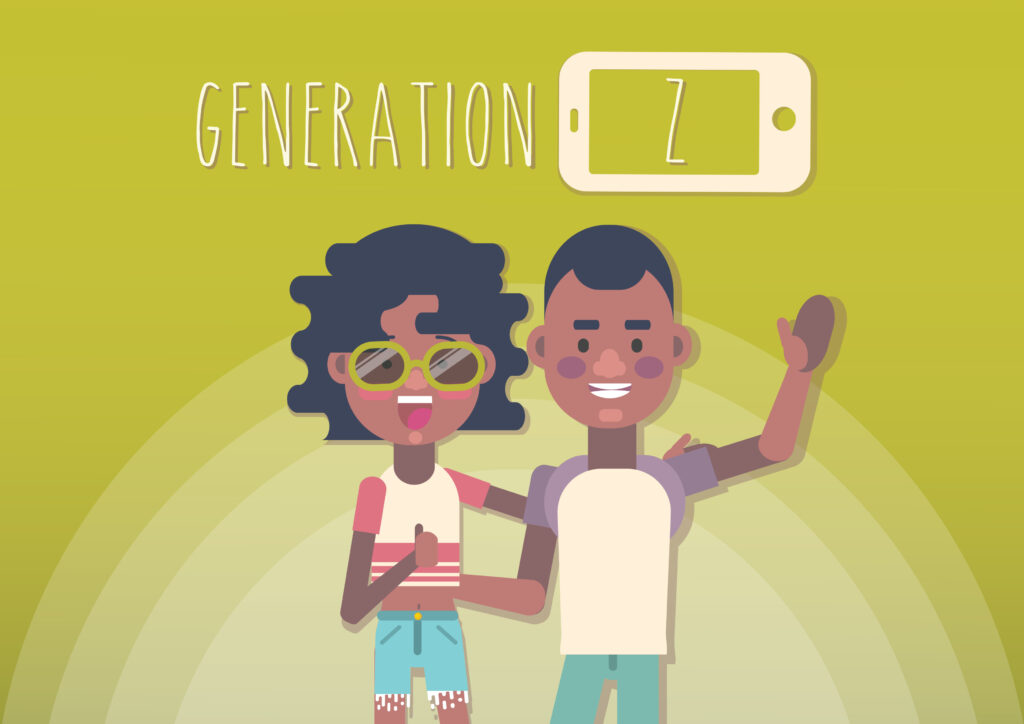
These digital natives are sophisticated, savvy “do-it-yourselfers”, who favor speed and convenience over everything. They can’t remember a time when the online world didn’t exist, so they live their lives out in the open, with experiences shared through social media platforms and online communities.
As the youngest generation of consumers, born between 1998 and 2010, Gen Z craves interactive and immersive experiences. They want to see real people using a brand’s product and services, but also, they want to see influencers living the lifestyle and want to be able to contribute to that brand experience with their own user-generated content, mainly in the form of videos.
Don’t think they’re superficial though. Gen Z cares more deeply about corporate social responsibility and sustainability issues than any other generation. Almost 47% will stop doing business with a brand if they are opposed to their stance on social issues, versus 35% of Gen X.
Growing up in the era of Uber and Door Dash, they expect fast, convenient service, even more so than Millennials. However, two thirds of Gen Z prefer in-store shopping, if only because it’s a more social experience they can share with their friends. Social shopping also extends to online, but mainly within social platforms; 64% use Instagram and Facebook to make purchases and 41% buy directly from influencers.
Because they are the generation that relies the most heavily on their smartphones (78% consider their mobile devices essential), they are almost twice as likely to turn to a TikTok influencer than a customer service agent, and they hate the phone; only 24% will use phone support. They much prefer to self-serve, using online forms, FAQs, videos, AI-automated agents (85%) and chatbots (78%).
What they care about: Social sharing, corporate responsibility, self-serve, influencers
Preferred Customer Service Channels: Social media, chatbots, AI (Artificial Intelligence) agents
How to Cater to the Customer Service Needs of Each Generation
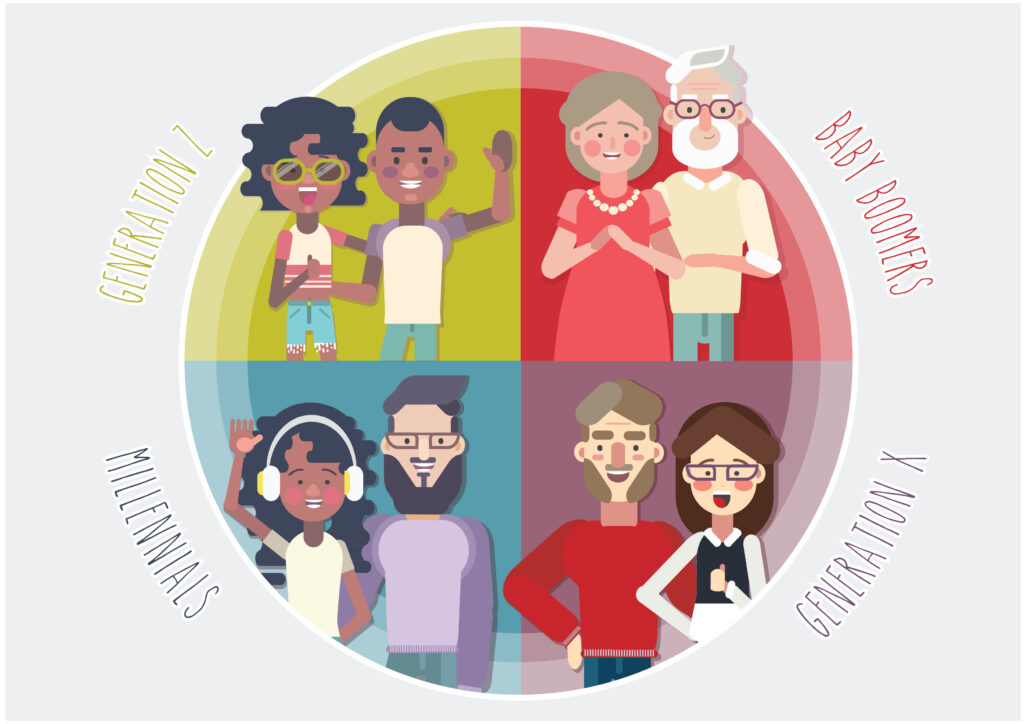
Each generation has its own customer service needs and preferences, but one thing they all have in common is the desire for options. The best approach, especially for retailers, is to adopt an omnichannel strategy that offers many options for customer service, whether that’s voice, email, live chat, or social media.
With technology bringing more speed and convenience to everyday tasks, consumers will expect the same level of speed and convenience in their service interactions. They want their issues resolved quickly and efficiently, no matter if that happens through self-serve options, chatbots or live agents. Though only a third of consumers (35%) would look to an AI chatbot for customer support, showing a strong preference amongst consumers for human to human interaction, particularly when it comes to resolving problems.
Consumers also want seamless service and want their data smoothly transferred from agent to agent, including when they transition from a self-service channel to an agent assisted channel, so they don’t have to repeat their issues multiple times before a resolution is achieved. In fact, a recent Gartner survey showed that over 90% of respondents reported high customer satisfaction when there was a seamless channel transition.
That’s where we can help. We can take on the complexity of today’s customer service challenges and find a way to create seamless, memorable experiences that keep customers loyal. Through our expertise in customer experience management, we will create an omnichannel experience that will appeal to a wide variety of generations, so you have no trouble navigating the generation gap.
Curious about our capabilities and what the nearshore can offer? Click here
References:
Gartner; April 20, 2021; Gartner Says Millennials and Gen Z Customers Prefer Third-Party Customer Service Channels; www.gartner.com; https://www.gartner.com/en/newsroom/press-releases/2021-04-20-gartner-says-millennials-and-gen-z-customers-prefer-t
Salesfloor; How Each Generation Shops; www.salesfloor.net; https://salesfloor.net/blog/generations-shopping-habits/
Danielle Lewis; October 1, 2019; Marketing to Gen X: How Your Ecommerce Strategy Can Successfully Convert Them; www.bigcommerce.com; https://www.bigcommerce.com/blog/gen-x-marketing/
Flori Needle; September 21, 2022; How to Create a Great Service Experience for Each Generation [New Data]; www.blog.hubspot.com; https://blog.hubspot.com/service/generational-preferences-for-service
Connor Gaspar, Neal Weinberg; Pragmatic Baby Boomers Want Value, Integrity, Substance from the Businesses in Their Lives; www.insights.sap.com; https://insights.sap.com/boomers-want-value-integrity-substance/
Jeff Wartgow; May 3, 2022; Generation-spanning survey reveals consumer perceptions of the customer service experience—and whom they trust most; www.blogs.oracle.com; https://blogs.oracle.com/cx/post/generational-survey-customer-service-experience-trust
PwC; June 26, 2023; June 2023 Global Consumer Insights Pulse Survey- Decision points: Sharpening the pre-purchase consumer experience; https://www.pwc.com/gx/en/industries/consumer-markets/consumer-insights-survey.html
Gartner Newsroom; July 11, 2023; Gartner Survey Finds 62% of Customer Service Channel Transitions are “High-Effort”; https://www.gartner.com/en/newsroom/press-releases/2023-07-11-gartner-survey-finds-62-percent-of-customer-service-channel-transitions-are-high-effort


